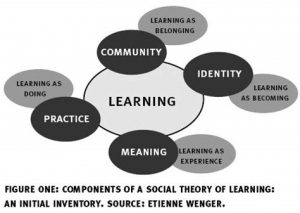On this page the general concepts and theories behind the term “engineering literacy” is outlined and discussed for each output and step of the ELIC project.
The following theories are applied to ELIC:
As there are various understandings of meaning of “literacy”: literacy in ELIC is a set of skills and something applied and practiced and as a learning process. (UNESCO, 2006)
- Literacy as skills encompasses in ELIC numeracy (mathematical proficiency and processing), littératie (often technological) skills applied to surrounding and workplace and information literacy (ability to access information sources and use critical skills to communicate via technology) (UNESCO, 2006)
- Literacy as applied and practiced is used in terms of functional literacy (universal skills that can be applied across contexts, irrelevant of what the context is)
- Literacy as a learning process: learning itself increases literacy: the more you understand, the more you can learn. ELIC uses the experiential learning cycle (Kolb, 1984) which facilitates reflection of concrete experiences

Kolb’s Learning Circle
Collaboration Approach
Additionally, “communities of practice” (Wenger & Lave, 1991) are created: working groups to learn within the project team and beyond.

Communities of Practice (Wenger&Lave 1991)
ELIC will close a knowledge GAP through making participants more literate.
At the Kick-off Meeting the following concrete concept has been established within the consortium in order to increase literacy among target groups:
Both, natural sciences and technical sciences are important and ELIC attempts to merge these disciplines in order to encourage more open minds for studying STEM degree programs. Consequently, the consortium agreed to transfer technical skills through illustrating examples in interdisciplinary styles.
